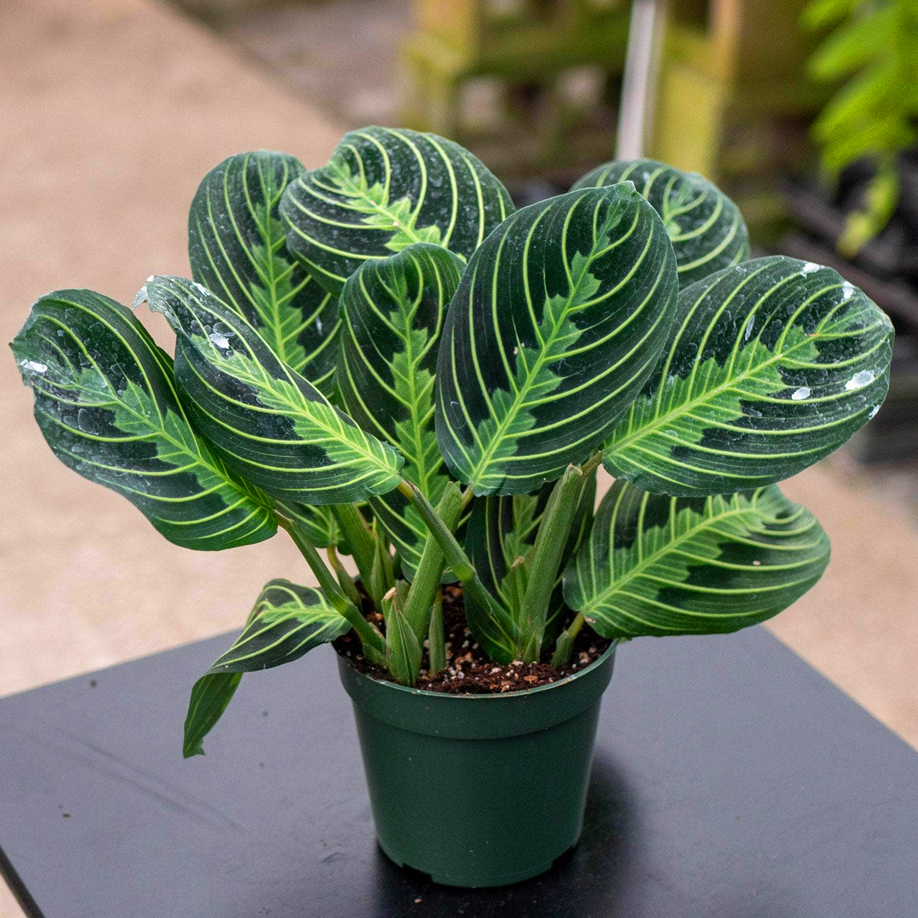Prayer plants are low-growing, spreading plants that thrive best when provided with greenhouse-like conditions, including warm, moist, gentle airflow, and plenty of fertilizer. Plants that are kept too cool or too dry are likely to lose their leaves or suffer from fungal infections that can cause the plant to die from root rot or collapse. Likewise, plants that are exposed to too much sun can become washed out and develop brown blotches on their leaves.
Hang or set your prayer plant near a window where it will receive indirect sunlight. Never set your plant in direct sunlight because the sun will scorch the plant’s leaves or the leaves will develop blotches or patches and fade in color intensity. Prayer plants are generally tolerant of lower light areas. In the winter, when the plants go into dormancy (and sometimes die back completely), provide them with bright light to maintain growth.
Soil
Prayer plants can prosper in a variety of soils, so long as they're well-draining. Typically, a traditional potting mix works fine, but you can make your own by combining two parts sphagnum peat moss, one part loamy soil, and one part perlite or coarse sand together. In addition, the soil should be acidic, with a pH of 5.5 to 6.0. To improve drainage, add rocks or gravel to the bottom of your pot and be sure that the pot has ample drainage holes.
Water
During their growing season, water your prayer plant frequently (whenever the top layer becomes dry) and never allow the potting soil to dry out completely. These plants are very susceptible to drought and will not survive long if left unwatered. However, to avoid fungal problems, do not let water sit directly on the leaves or let the plant get soggy. Both insufficient water and overwatering can cause the leaves to turn yellow and drop from the plant.2 When watering your prayer plant, use water that is at least at room temperature, if not slightly warm.
Temperature and Humidity
Prayer plants prefer normal household temperatures between 60 and 80 degrees Fahrenheit. Prolonged lower temperatures can damage the leaves and cause them to drop from the plant. Additionally, prayer plants thrive best in a very humid environment. To increase the humidity available to your plant, you can place a small humidifier nearby, or place the plant atop a tray that has been filled with small stones and water. You can also mist the leaves frequently with room temperature or slightly warm water.
Fertilizer
Fertilize your prayer plant every two weeks from early spring through fall (reducing to once a month in winter) with a water-soluble houseplant fertilizer diluted to half-strength. If you use too little fertilizer, your plant will grow slowly or hardly at all. However, too much fertilizer can burn the plant's roots—its leaves will start to brown and the plant can even die.
- Plant will be sent Bare Rooted without Pot and Soil.
- Order above ₹1500 are eligible for FREE SHIPPING.
- Free Replacement/ Refund if Damaged during Transit.
Note: The Product image is for reference purposes only. The actual product may vary in shape, color, or appearance based on climate, age, height, etc.
Shipping Time: Orders are shipped within 3 to 5 working days (We try to send as soon as possible), and the delivery partner may take approximately 3 to 7 working days. Delivery time may vary due to your location and other conditions.
Shipping Charge: Shipping charge is Minimum ₹130 (Up to 5 Products) & Maximum ₹200 (Above 8 Products). Order above ₹1500 are eligible for FREE SHIPPING.

